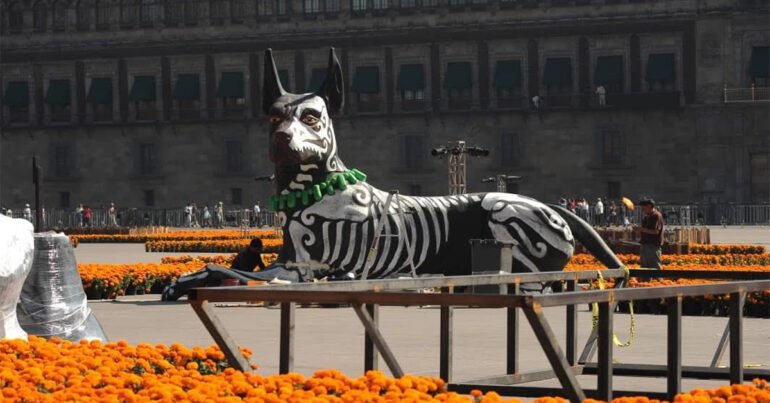It begins with a trail of marigolds. Bright orange petals line the cobblestone streets, guiding visitors past flickering candles and paper skulls, leading toward altars layered with memories. In homes and plazas, families quietly prepare to welcome back their loved ones.
All across Mexico, the country is getting ready to honor its ancestors this weekend with one of its most deeply rooted traditions: the Day of the Dead. It’s not just a holiday; it’s a cultural heartbeat, connecting generations in a way that’s both spiritual and vividly alive.
A Nation of Altars and Marigolds
In every corner of the country, families are building altars called ofrendas, decorated with sugar skulls, candles, photographs, and cempasúchil flowers. Those bright blooms — said to guide souls back to the world of the living — will transform entire towns and cities into landscapes of orange and gold.
“This is a unique celebration, full of color and joy, where we honor life through our traditions,” said Josefina Rodríguez Zamora, Mexico’s minister of tourism, in a statement provided to Caribbean Journal. “Nowhere else in the world is there such a vibrant and moving manifestation, uniting families and filling us with pride as a nation.”
Observed on Nov. 1 and 2, the holiday honors children on Día de los Angelitos and adults the following day. Rooted in ancient pre-Hispanic rituals and shaped by Catholic tradition, it’s an expression of remembrance that has evolved over centuries into a global symbol of Mexico’s cultural depth.
Parades, Processions and Candlelight
In Mexico City, the annual parade down Paseo de la Reforma is set to fill the capital with skeletal figures, dancers and towering floats — a display that draws visitors from around the world. In Oaxaca, artisans are crafting intricate sand tapestries and delicate paper decorations. And in Pátzcuaro, families will keep vigil through the night beside the lake, surrounded by candles and flowers — a scene long recognized as one of the most beautiful in Mexico.
In the north, states like Nuevo León and Chihuahua are hosting craft fairs and community gatherings, while coastal regions like Veracruz and Yucatán are preparing music-filled festivals and feasts. Traditional dishes like pan de muerto and tamales will anchor the celebrations, adding flavor to a holiday that is both solemn and joyful.
A Global Symbol of Cultural Power
Recognized by UNESCO in 2008 as an Intangible Cultural Heritage of Humanity, the Day of the Dead remains a powerful reflection of Mexico’s identity — a celebration that blends family, faith, art and memory in a way unlike any other tradition in the world.
This year, more than 1.6 million travelers are expected to experience the festivities, marking a 2.3 percent increase over 2024. From candlelit cemeteries in small towns to dazzling parades in the capital, visitors will find themselves stepping into a living tradition — one that turns remembrance into celebration, and death into a bridge back to love.
Caribbean Journal Staff
2025-10-28 21:42:00

